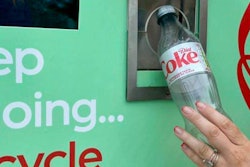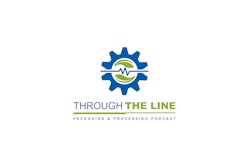
ASTM International Subcommittee D20.95 on Recycled Plastics, part of Committee D20 on Plastics, has approved major enhancements to D7611, Standard Practice for Coding Plastic Manufactured Articles for Resin Identification. ASTM D7611, first issued in 2010, covers the long-standing Resin Identification Code (RIC) system for identifying the various types of plastic resin used in manufactured articles.
The RIC was developed by the Society of the Plastics Industry (SPI) in 1988 to meet the needs of recyclers and manufacturers for a consistent, uniform coding system that can be applied worldwide. SPI began work with ASTM International in 2008 to involve technical and industry stakeholders in updating and maintaining the RIC system to better address changing societal needs and advancements in plastics materials. Originally intended to assist waste recovery facilities in the quality sorting of plastics products prior to recycling, the RIC system has today become a vital foundational tool used by municipalities, scrap brokers, recyclers, manufacturers, consumers, and others for managing the end-of-life of plastics materials.
According to SPI, the latest revisions to D7611 further modernize the RIC system, providing for more effective utilization across the stakeholder community, while also addressing recent innovations in polymer applications and multilayer materials. Says Melissa Hockstad, vice president of science, technology, and regulatory affairs at SPI, “Diverse experts have come together in the open and transparent ASTM process to develop changes to D7611 that better align the RIC system with modern era requirements. The recent efforts of Committee D20.95 address several important technical issues that support the underlying focus of the code, enable the inclusion of new resins, and lay the groundwork for future improvements.”
Ensuring proper usage of the coding system
Among the major revisions to ASTM D7611 is a change to the graphic marking symbol used to identify resin type. The RIC system has used a “chasing arrows” symbol surrounding a numeral from 1 to 7 that defines the resin used in the product’s packaging. Under D7611, this marking symbol is now specified as a solid equilateral triangle around the number.
The RIC system was originally developed and continues to be solely dedicated to identifying resin content, rather than product recyclability. By replacing the chasing arrows graphic—commonly associated with recycling—with an equilateral triangle, ASTM D7611 helps bring focus back to the system’s core mission: resin identification and quality control prior to recycling.
Bridget Anderson, director, Recycling Unit, Bureau of Waste Prevention, Reuse and Recycling, NYC Department of Sanitation, participated in the development of the revised D7611 standard as a member of the ASTM D20.95.01 task group. “Changing the marking symbol in D7611 decouples the RIC system from the recycling message, which has been a significant source of confusion by the public,” she says. “This is an important first step to help ensure the long-term integrity and viability of the RIC system. Building on this effort, committee members can marshal their collective expertise to continue to create a more robust coding system that is relevant and useful to multiple stakeholders in the recycling system today and into the future.”
Addressing the need for new resins
ASTM D7611 provides codes for the six most commonly found resin types, with a seventh category created for all other types. These categories include: 1) polyethylene terephthalate (PETE); 2) high-density polyethylene (HDPE); polyvinyl chloride (V); 4) low-density polyethylene (LDPE); 5) polypropylene (PP); 6) polystyrene (PS); and 7) other, including materials made with more than one resin from categories 1-6.
As part of its ongoing efforts, the D20.95.01 task group is assessing how to differentiate between different melt flows within each resin; how to identify certain additives that might significantly change the properties of a resin; and how to better label individual resins (PLA, PC, ABS, Nylon, and others) that are currently designated as “other” in the current RIC system. The task group is also discussing whether a new code is needed for linear low-density polyethylene (LLDPE) to enable products made from this technology to be accurately identified and distinguished from products marked as HDPE or LDPE.
Thomas Pecorini, technology fellow, Eastman Chemical Co., and a member of the D20.95.01 task group, comments, “Clearly and distinctly identifying new resins through the ASTM D7611 code system will support consumers, brand owners, retailers, waste collectors, municipal recovery facilities, and reclaimers in identifying manufactured articles made from these materials and ultimately help to facilitate the desired recycling of these products.”
All parties interested in contributing to potential revisions to ASTM D7611 are invited to join the task group responsible for the new standard, D20.95.01.


























